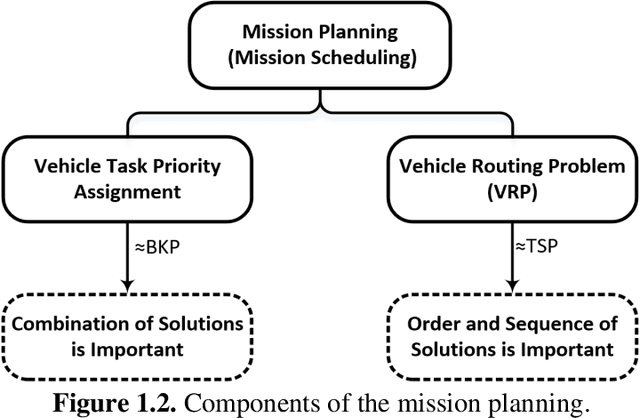Autonomous Reactive Mission Scheduling and Task-Path Planning Architecture for Autonomous Underwater Vehicle
Paper and Code
Jun 13, 2017



An Autonomous Underwater Vehicle (AUV) should carry out complex tasks in a limited time interval. Since existing AUVs have limited battery capacity and restricted endurance, they should autonomously manage mission time and the resources to perform effective persistent deployment in longer missions. Task assignment requires making decisions subject to resource constraints, while tasks are assigned with costs and/or values that are budgeted in advance. Tasks are distributed in a particular operation zone and mapped by a waypoint covered network. Thus, design an efficient routing-task priority assign framework considering vehicle's availabilities and properties is essential for increasing mission productivity and on-time mission completion. This depends strongly on the order and priority of the tasks that are located between node-like waypoints in an operation network. On the other hand, autonomous operation of AUVs in an unfamiliar dynamic underwater and performing quick response to sudden environmental changes is a complicated process. Water current instabilities can deflect the vehicle to an undesired direction and perturb AUVs safety. The vehicle's robustness to strong environmental variations is extremely crucial for its safe and optimum operations in an uncertain and dynamic environment. To this end, the AUV needs to have a general overview of the environment in top level to perform an autonomous action selection (task selection) and a lower level local motion planner to operate successfully in dealing with continuously changing situations. This research deals with developing a novel reactive control architecture to provide a higher level of decision autonomy for the AUV operation that enables a single vehicle to accomplish multiple tasks in a single mission in the face of periodic disturbances in a turbulent and highly uncertain environment.
 Add to Chrome
Add to Chrome Add to Firefox
Add to Firefox Add to Edge
Add to Edge